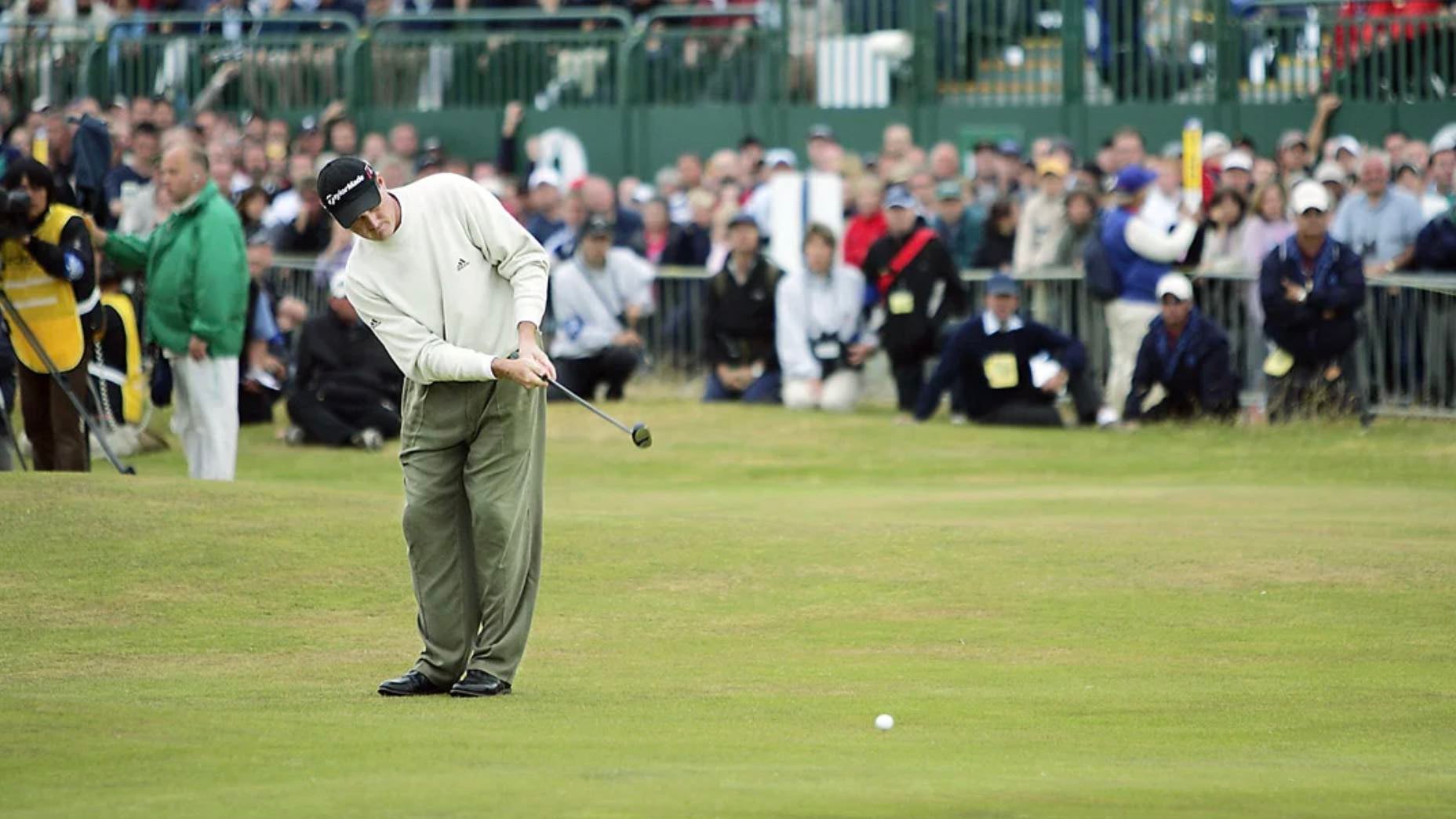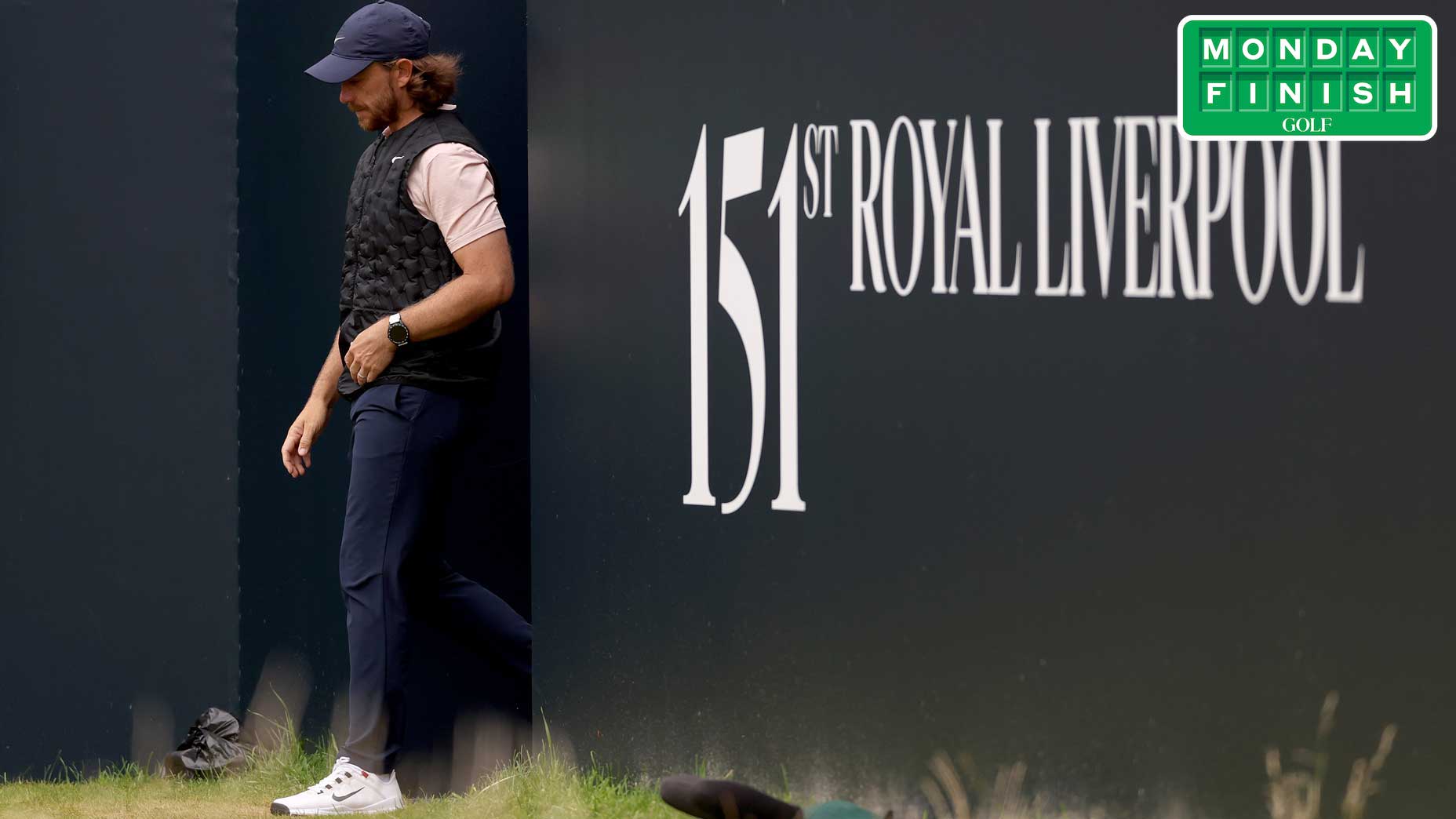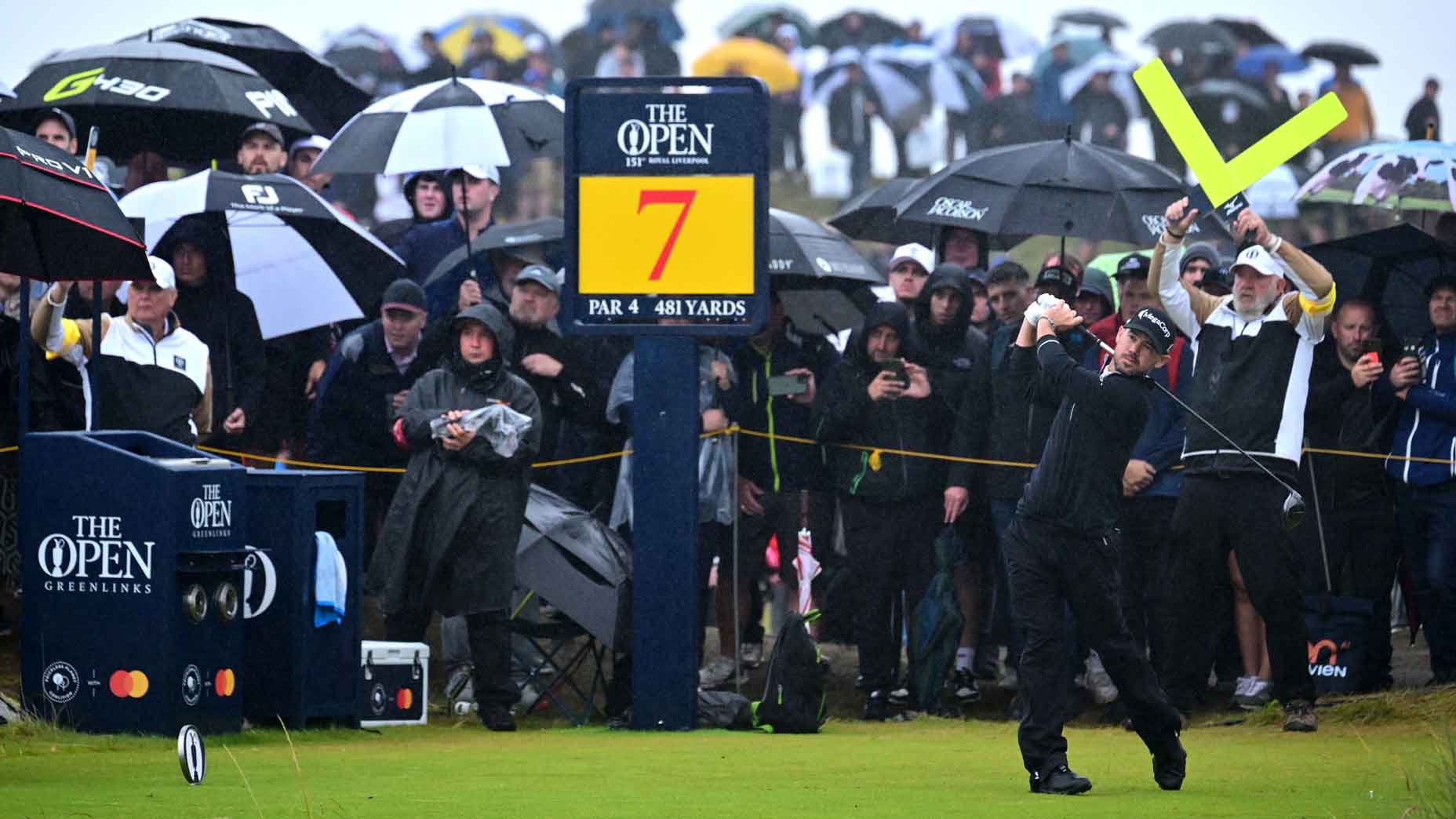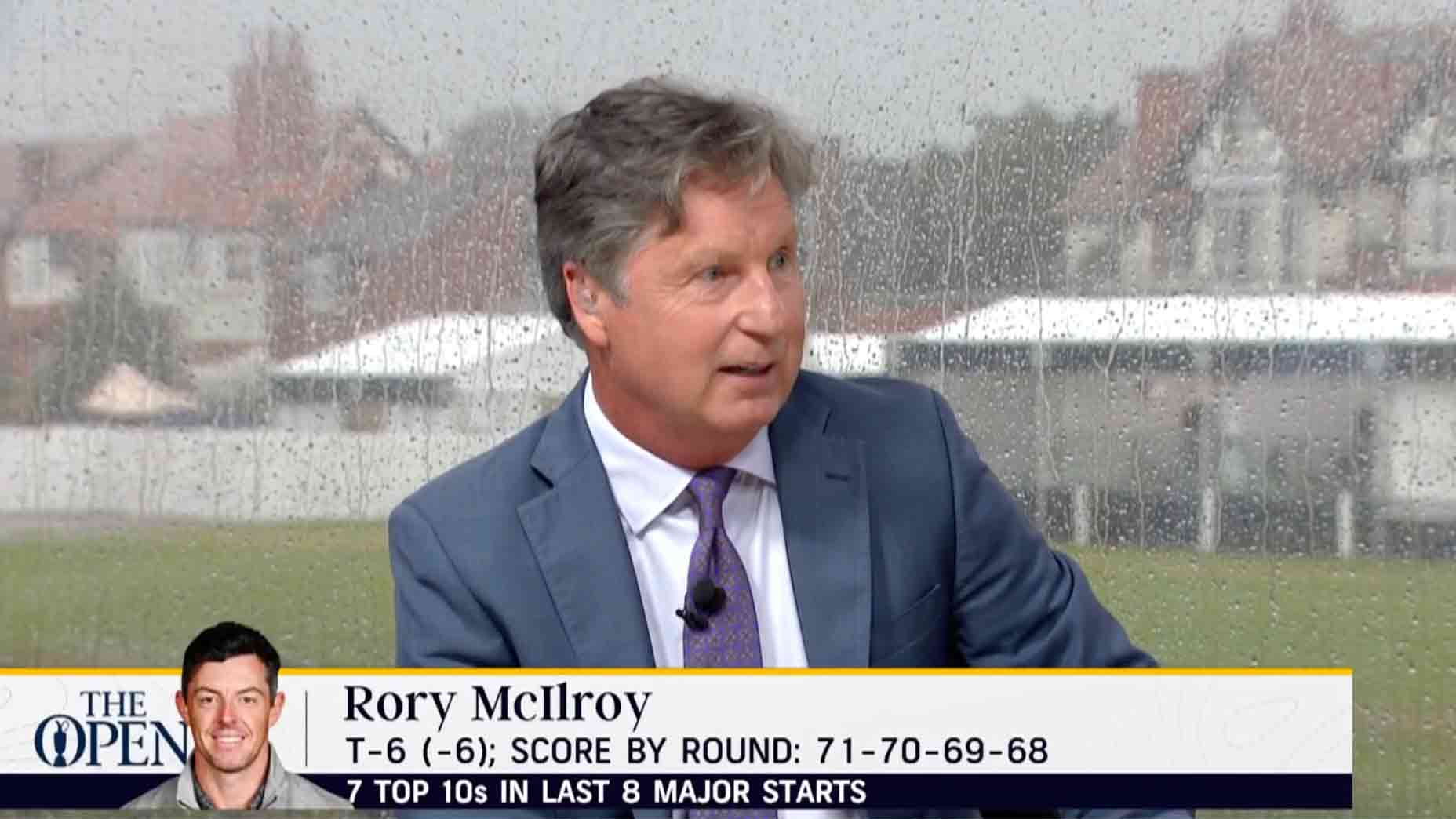He designed the Open’s controversial 17th hole. Here’s how he thought it played

The par-3 17th hole at Royal Liverpool last week.
getty images
He was nervous Thursday morning, and no wonder. The early goings of a major. Time to see his work put to the test.
Making his way across the grounds of Royal Liverpool, the architect Martin Ebert grabbed a seat in the grandstands beside the par-3 17th, keen to watch the world’s best play a hole that he’d designed.
“There was a tremendous amount of excitement among the spectators, and a long queue just to get into the grandstands,” Ebert told GOLF.com. “I was feeling quite a bit of that excitement myself.”
In the run-up the 2023 Open Championship, no portion of the host venue inspired more headlines — or drew more scrutiny — than the 136-yard (give or take, depending on the pin) penultimate hole. Formerly the 15th in Royal Liverpool’s Open routing, the hole had been reversed and shortened so that it now faced estuary views and played to a small infinity green with runoffs and trouble all around. Though the change was meant to inject pint-sized drama down the stretch (a lofted club under pressure into a world of peril), it was also part of a larger championship plan that made room to lengthen two closing par-5s.
During practice rounds last week, the 17th, predictably, polarized opinions. Brooks Koepka said he loved it. Jon Rahm proclaimed it fair, with an asterisk, “because if it’s unfair, it’s unfair for everybody.”
As the competition got underway on Thursday, in relatively benign conditions, Ebert said he began to worry. In the first two groups, every player hit the green. Ho-hum. No drama.
“I started to think that maybe all the hype would come to nothing,” Ebert said.
Then came Lucas Herbert, the co-leader at the time, with a miss left to a right pin, which led to a poor chip, bunkers woes and a triple-bogey. Soon after, Ryan Fox had trouble, too. And Ebert felt the Open had what everyone was after. He watched 14 groups that morning, and saw what he described as a healthy mix of punishments and payoffs.
“There was plenty of excitement,” Ebert said. “I thought (the hole) had provided an appropriate test.”
Over the next three days, Ebert followed the action as most fans did: on TV. He thought the 17th — which played as the 8th-hardest hole for the week with a 3.121 scoring average — stood up well, producing a grab bag of results. A good example was the play on Friday, when Travis Smyth of Australia made an ace and defending Open champion Matt Fitzpatrick made a triple-bogey after taking four whacks in the sand. In the wake of that misfortune, Fitzpatrick suggested that the hole should be scrapped. His caddie, Billy Foster, shared that opinion. This was the same Fitzpatrick who would birdie the 17th twice before the Open was over. It was also the same Foster who, prior to the tournament, had called the 17th a “monstrosity” and warned that this year’s Open could be remembered “for a calamity that happened.”

Melodramatic? Maybe. But understandable. In 2003, Foster was on the bag of then-leader Thomas Bjorn when Bjorn took three shots from a bunker on the par-3 16th hole at Royal St. George’s, making a triple bogey that cost him the claret jug. Loopers, like golfers, aren’t immune to PTSD.
As for Ebert, tuning in from elsewhere in England, he took the feedback, good and bad, with equanimity. That’s just how it goes. You can’t please all the people all the time, especially not when you build a hole at an historic championship venue that’s meant to call attention to itself.
“I know there was some criticism of the idea of intentionally adding drama,” Ebert said. “But the hole was also part of an overall set of proposals meant to benefit the championship.”
It served that purpose, Ebert said, even as it “rewarded good shots and punished poor ones.”
From his perspective, it’s not as if the 17th played out of whack.
Statistics appear to bear him out. For the week, the 17th yielded close to the same number of birdies (65) and bogies (72).
Those were the numbers as of Sunday evening.
On Monday morning, though, Ebert woke to this headline in The Telegraph: “Royal Liverpool to radically overhaul controversial 17th hole after the Open due to complaints.”
That was news to Ebert. He wasn’t aware of any changes in the works. Royal Liverpool said it wasn’t, either.
“There are no plans to modify the 17th,” a club representative told GOLF.com by phone.
Which doesn’t mean there isn’t more to the story. According to a source familiar with the inner-workings at Royal Liverpool, the 17th has sparked complaints from club members since it opened, some of whom feel the hole is too severe for year-round play. The source told GOLF.com that club members now joke that when high-handicappers play the course, they march directly from the 16th green to 18th tee, marking a “6” on their scorecards for the 17th without bothering to play the hole.
Member play is different than major-championship play, of course. And changes to major venues are never made lightly. According to the Royal Liverpool insider, it would not be surprising if the club decided to soften the 17th by, say, raising the tee or mellowing some of its contours or hazards. But such modifications would not be in response to what transpired at the Open.
A “monstrosity”? Not at all. Not by the numbers. And not in the view of the man who designed it.
“From what I could tell, it was big hit among spectators,” Ebert said. “It generated a lot of excitement in the grandstands, and the views were fantastic. From the standpoint of golf being an entertainment industry, I think it fulfilled its obligations.”











